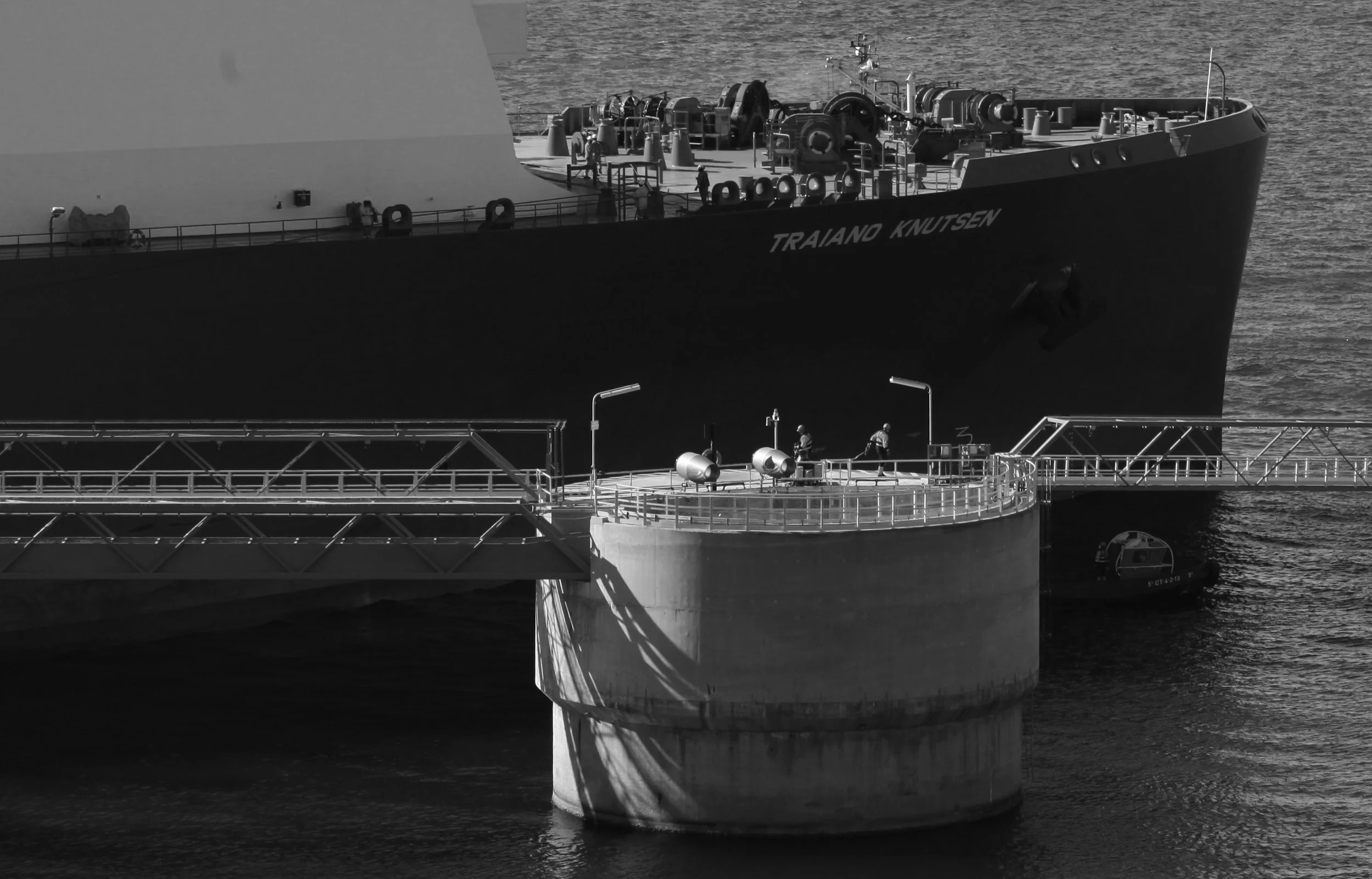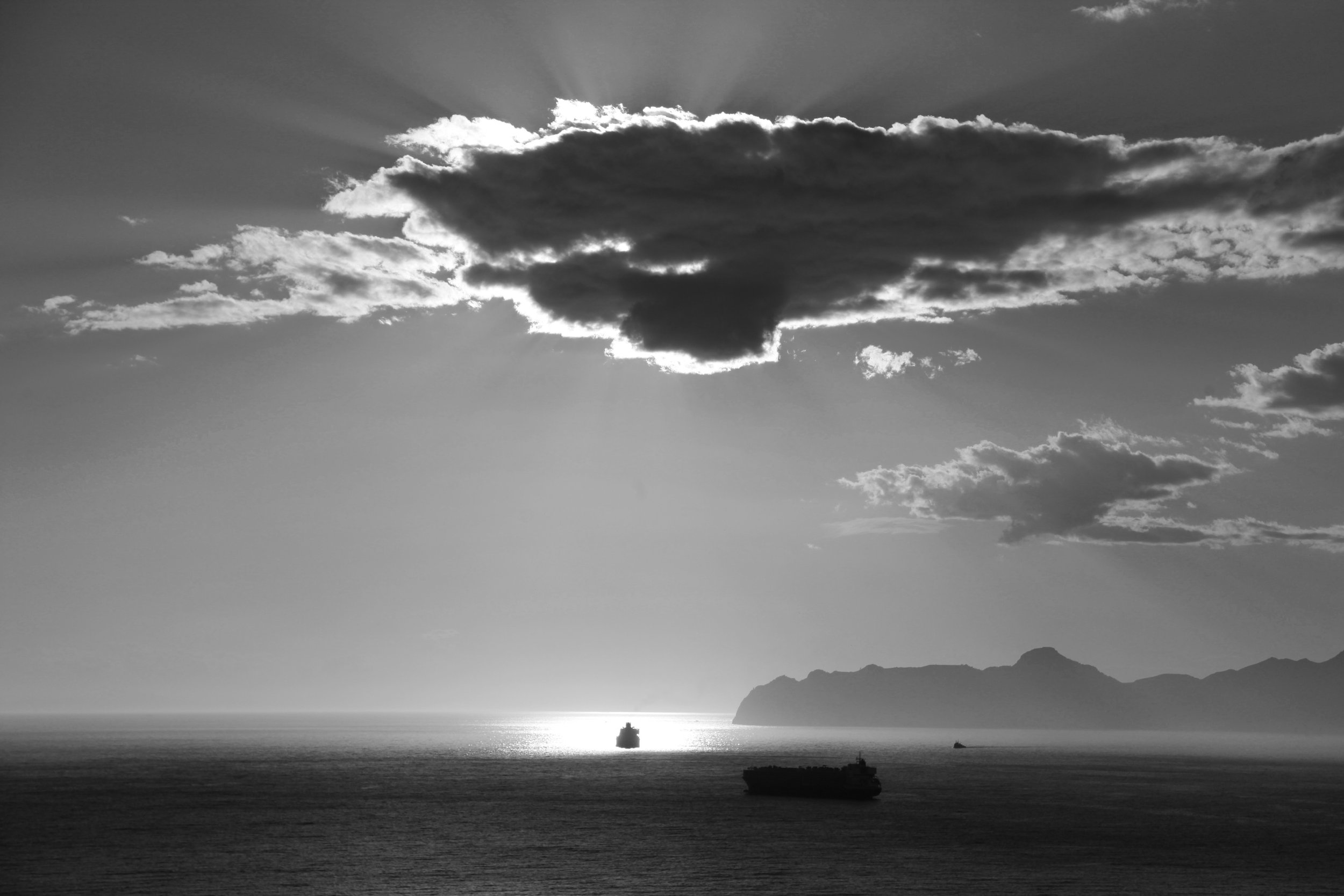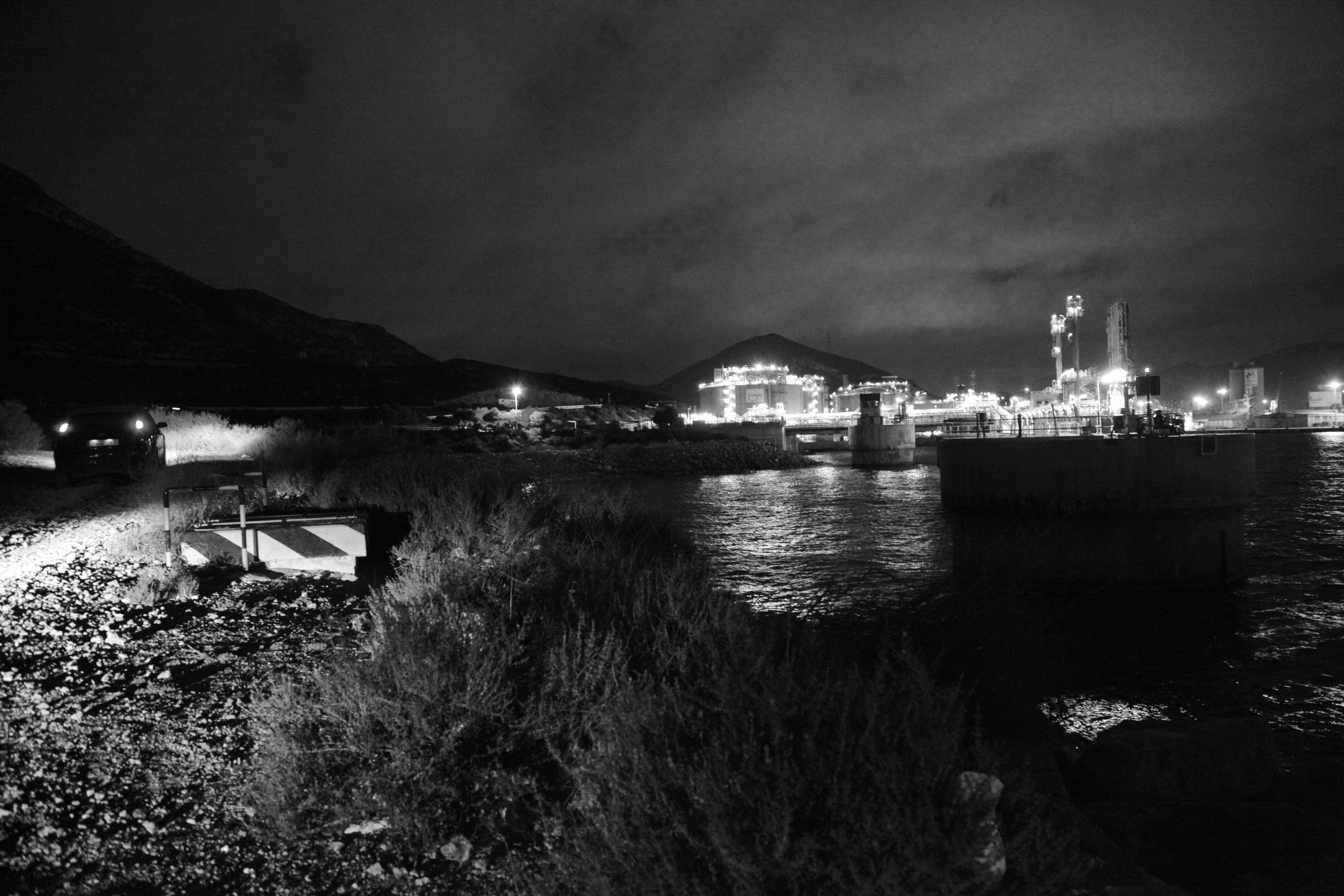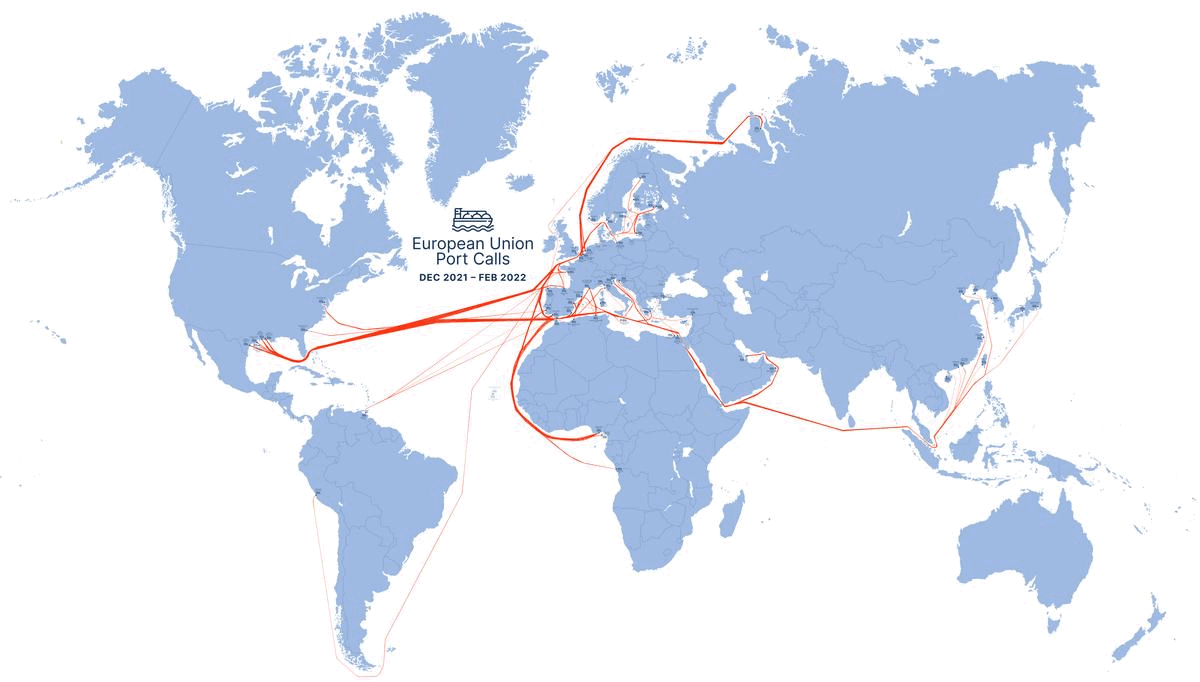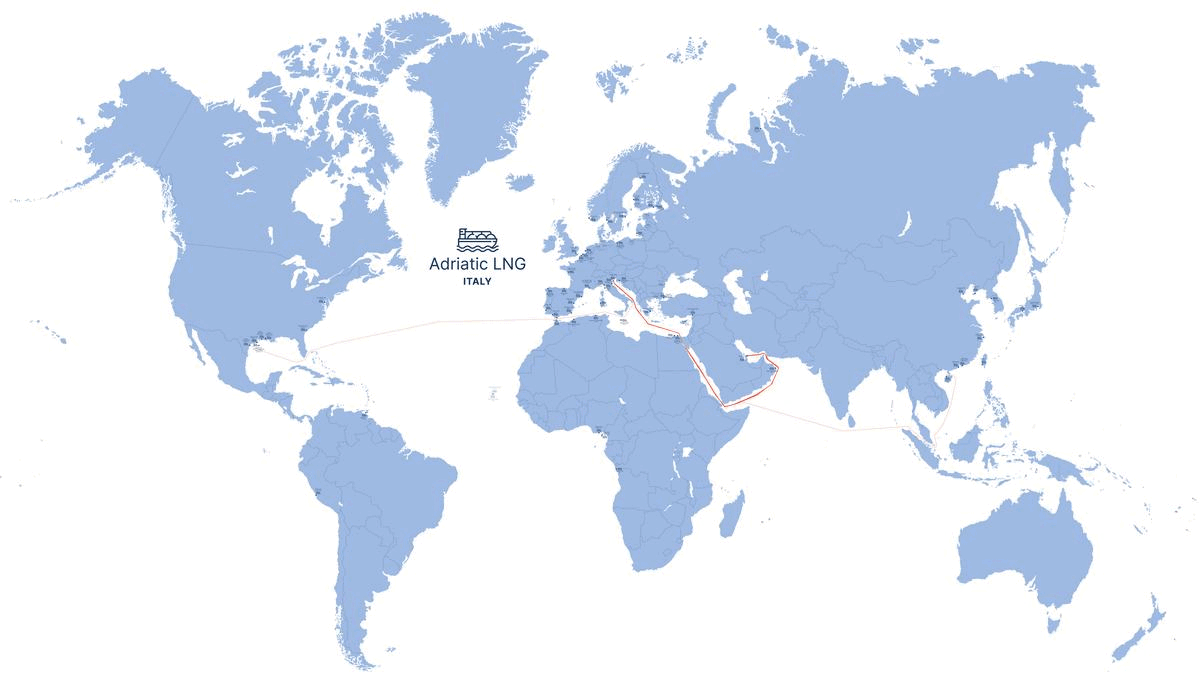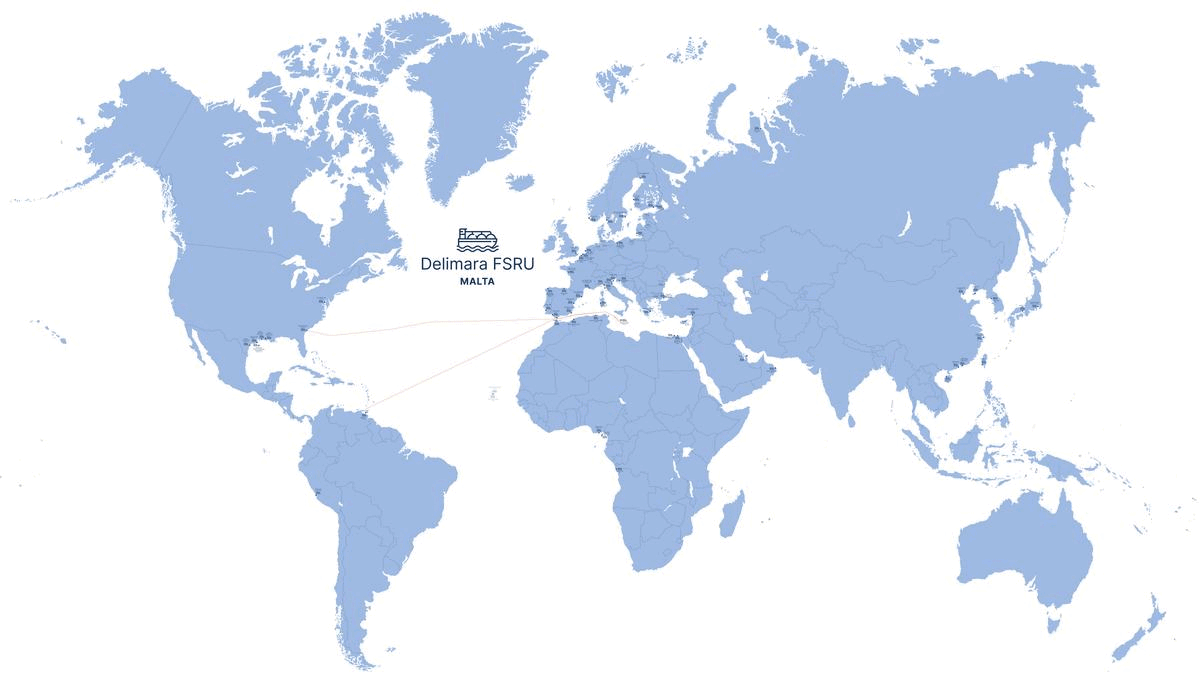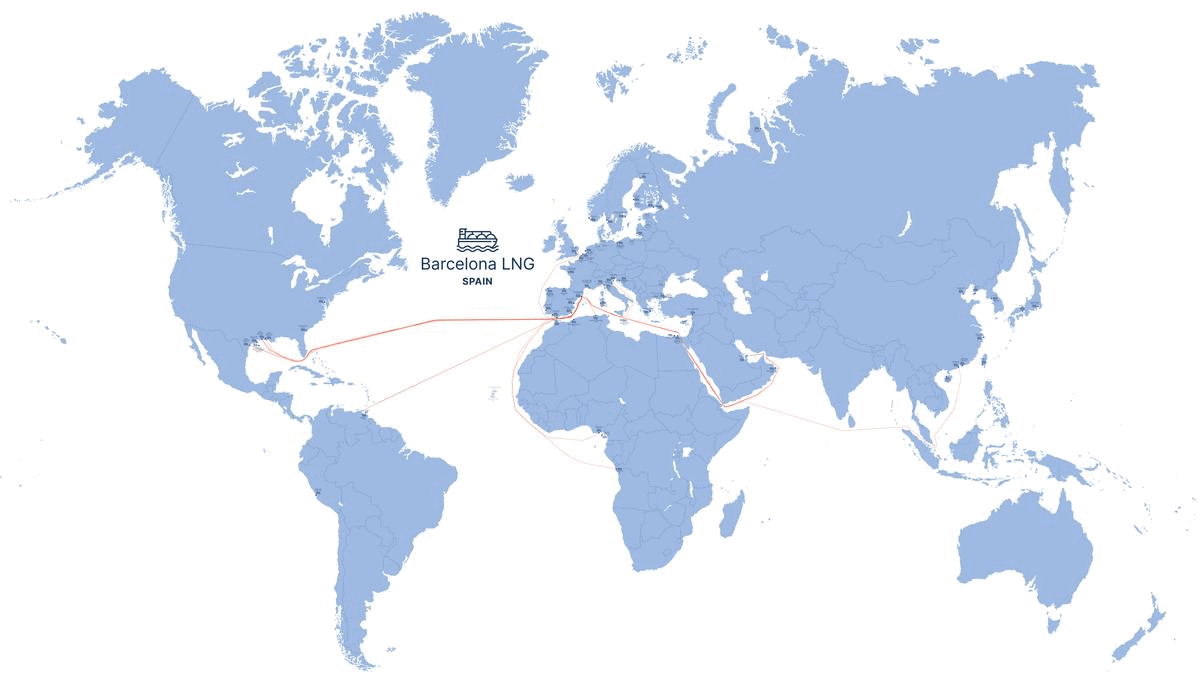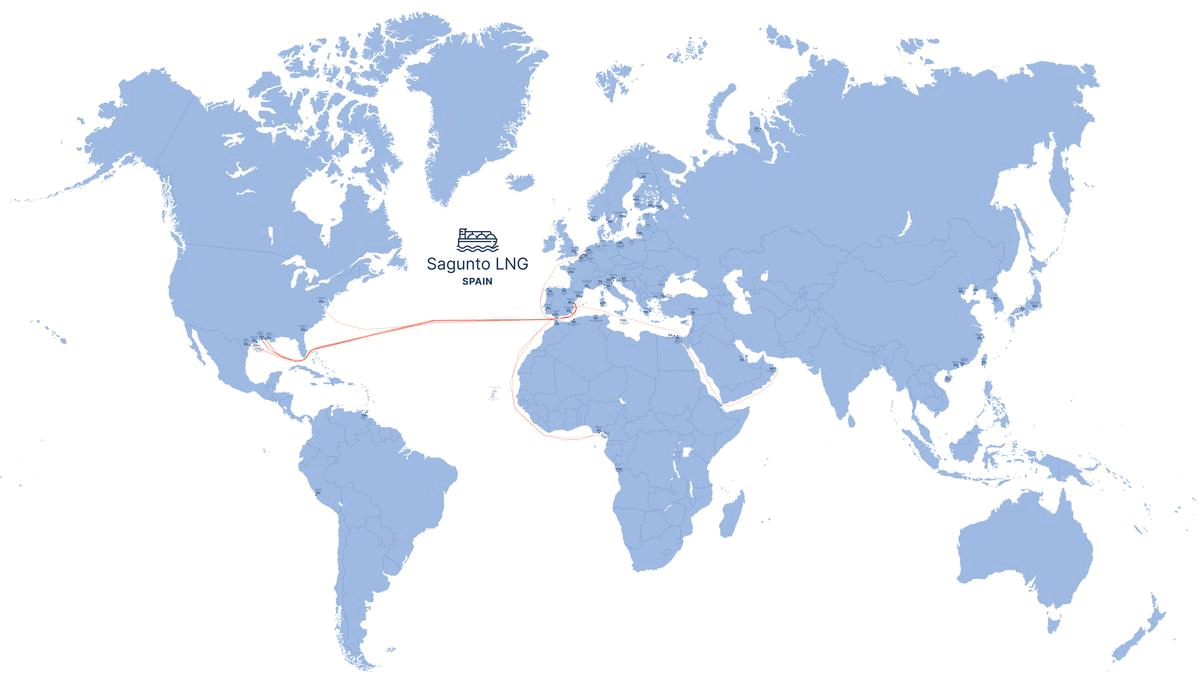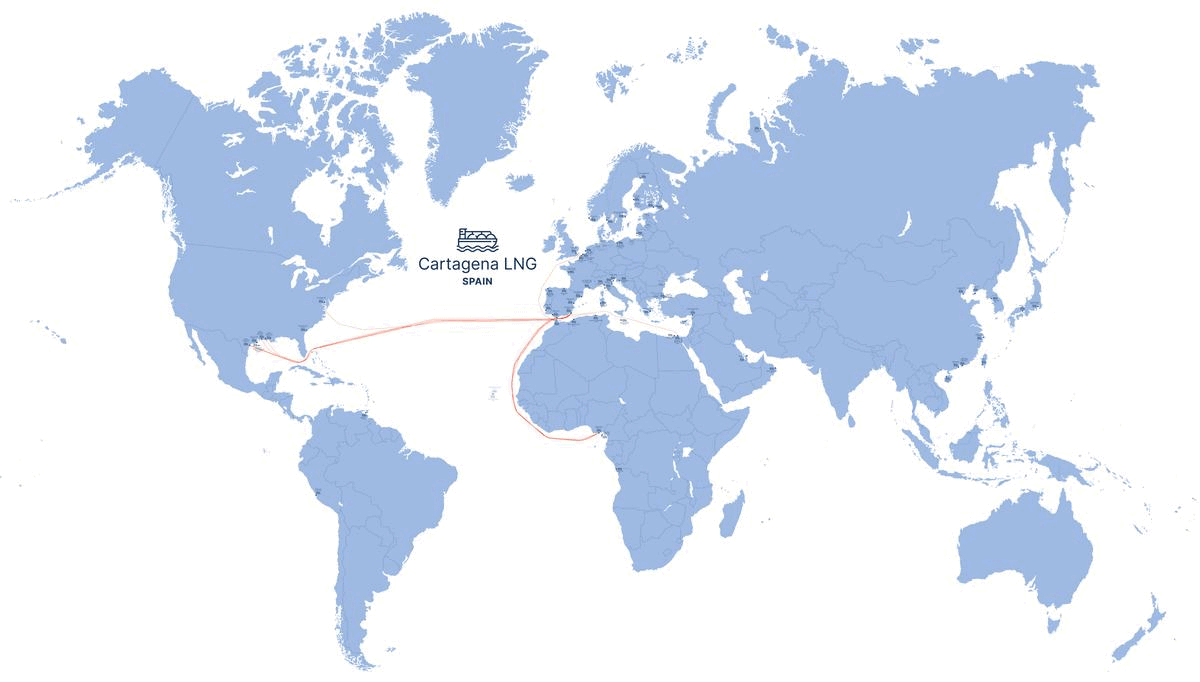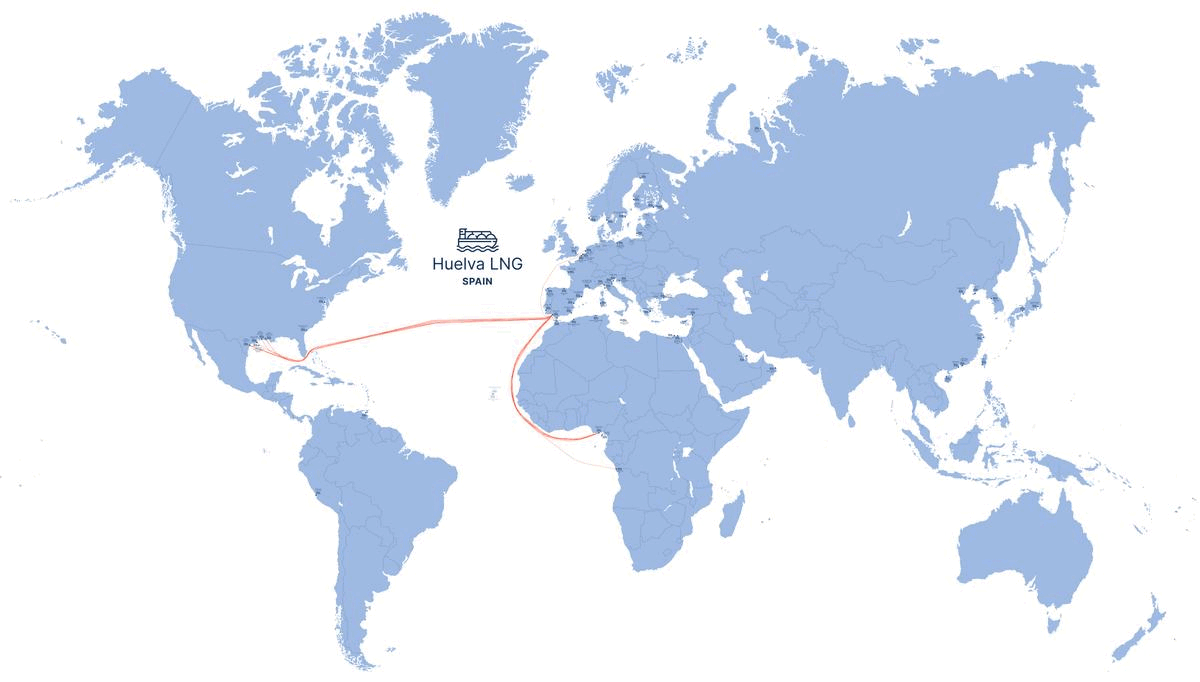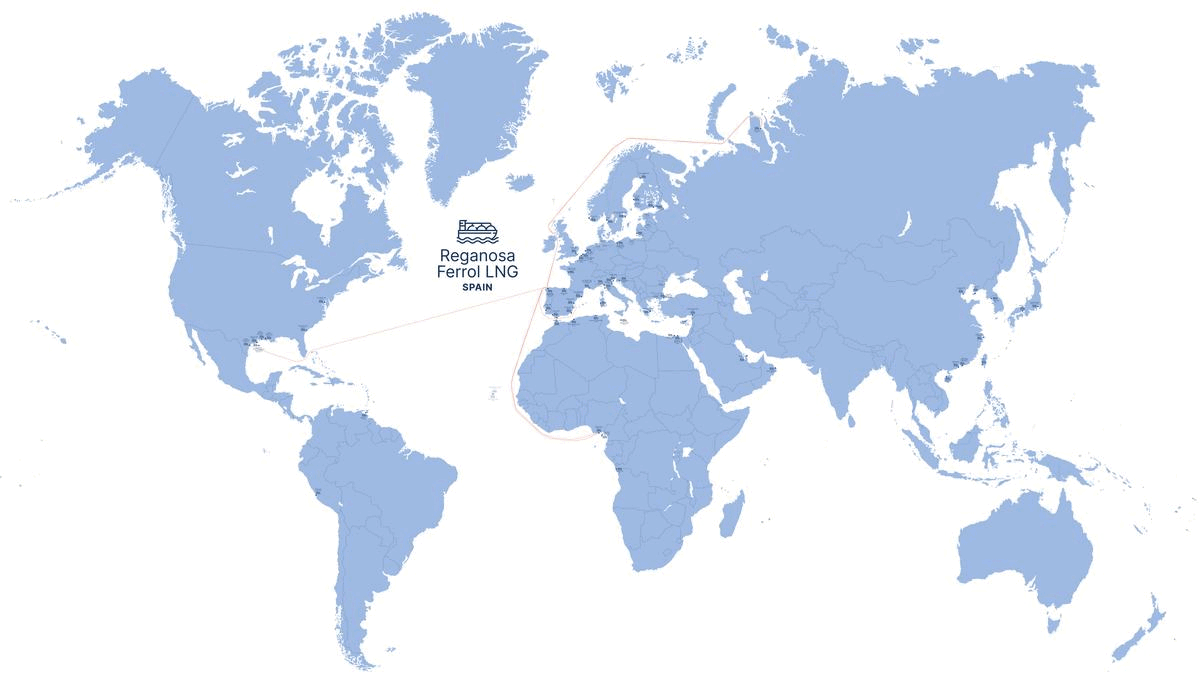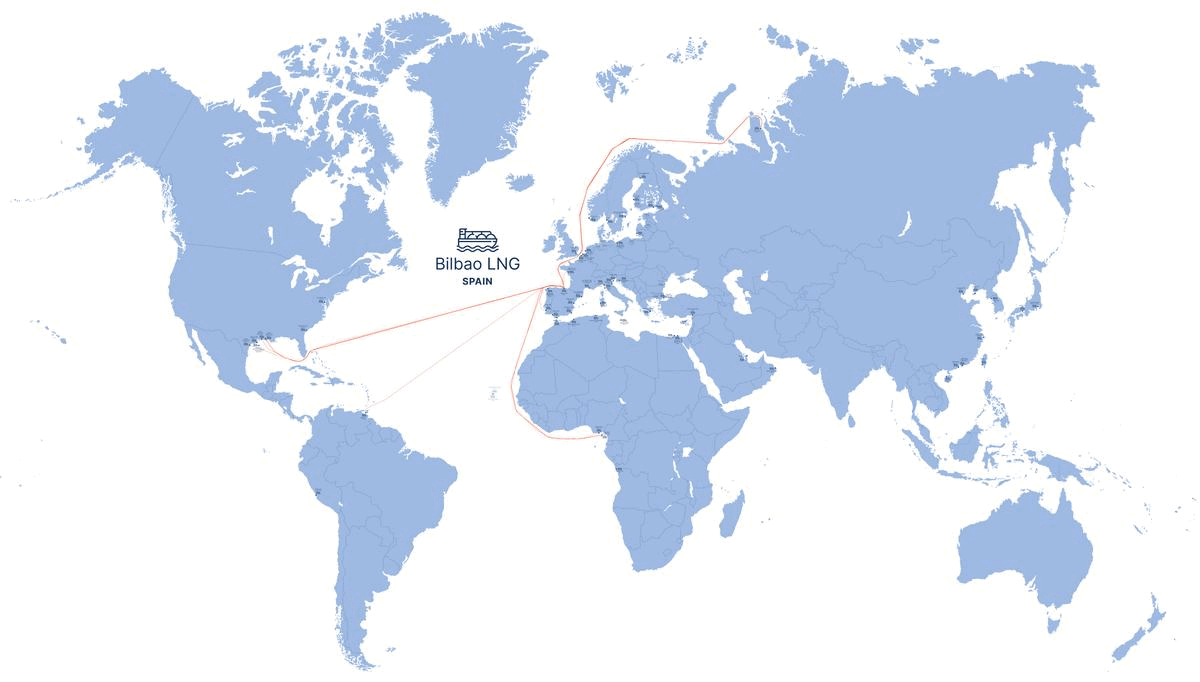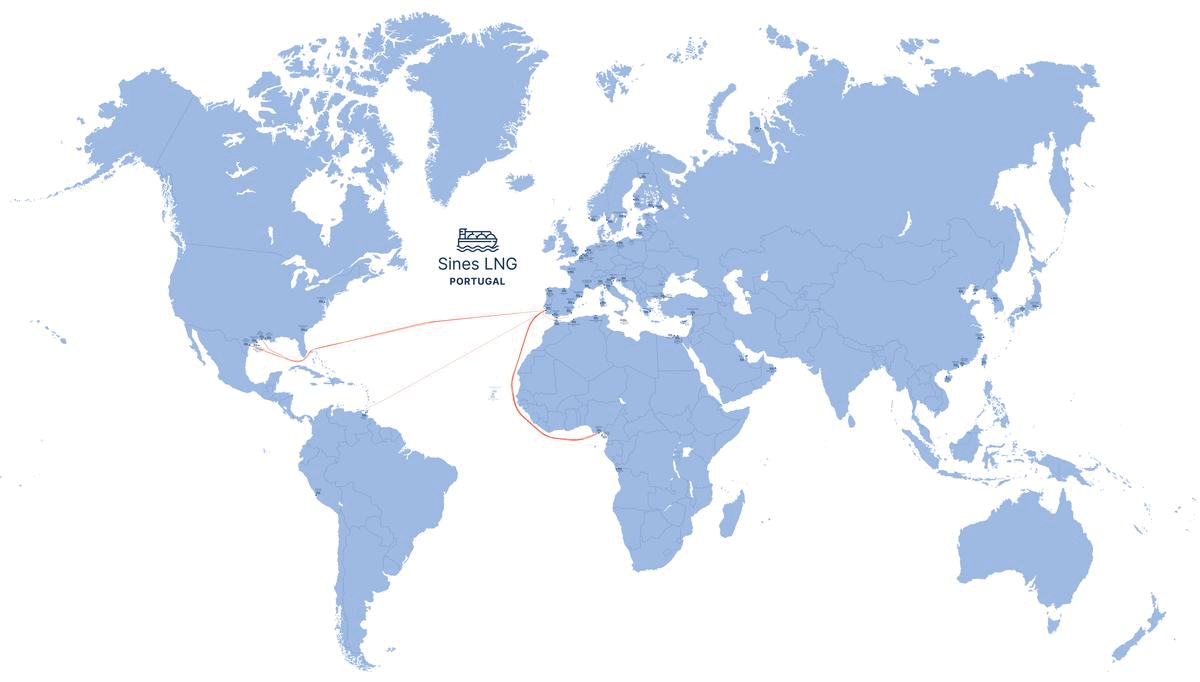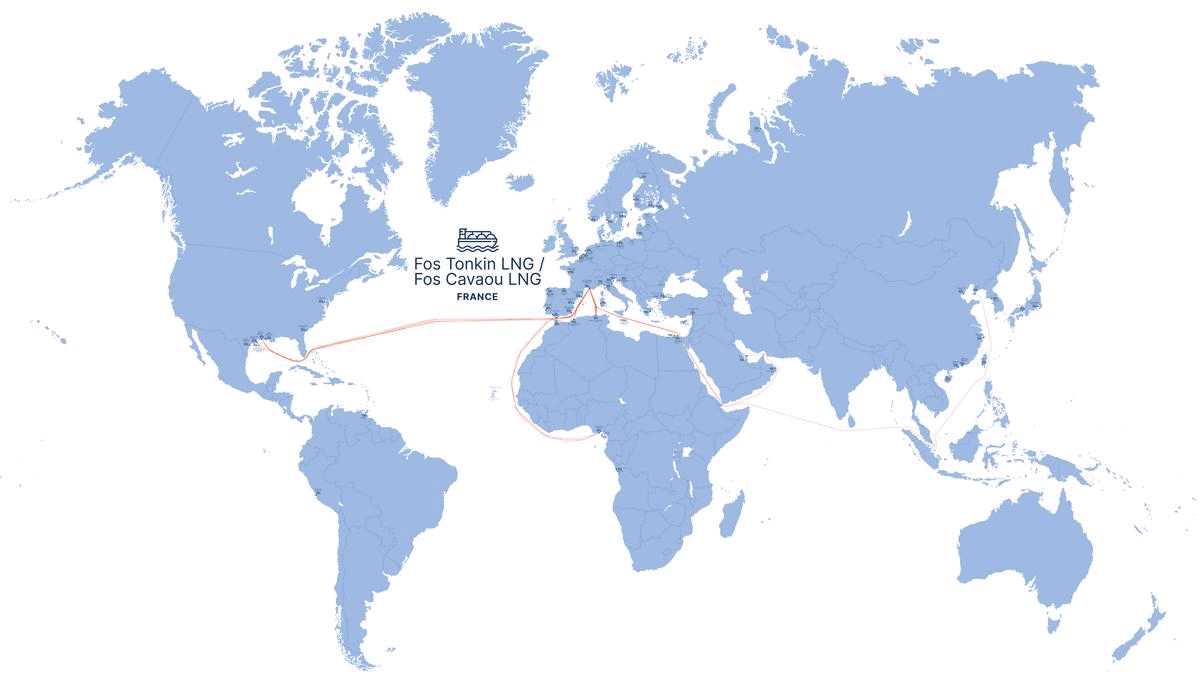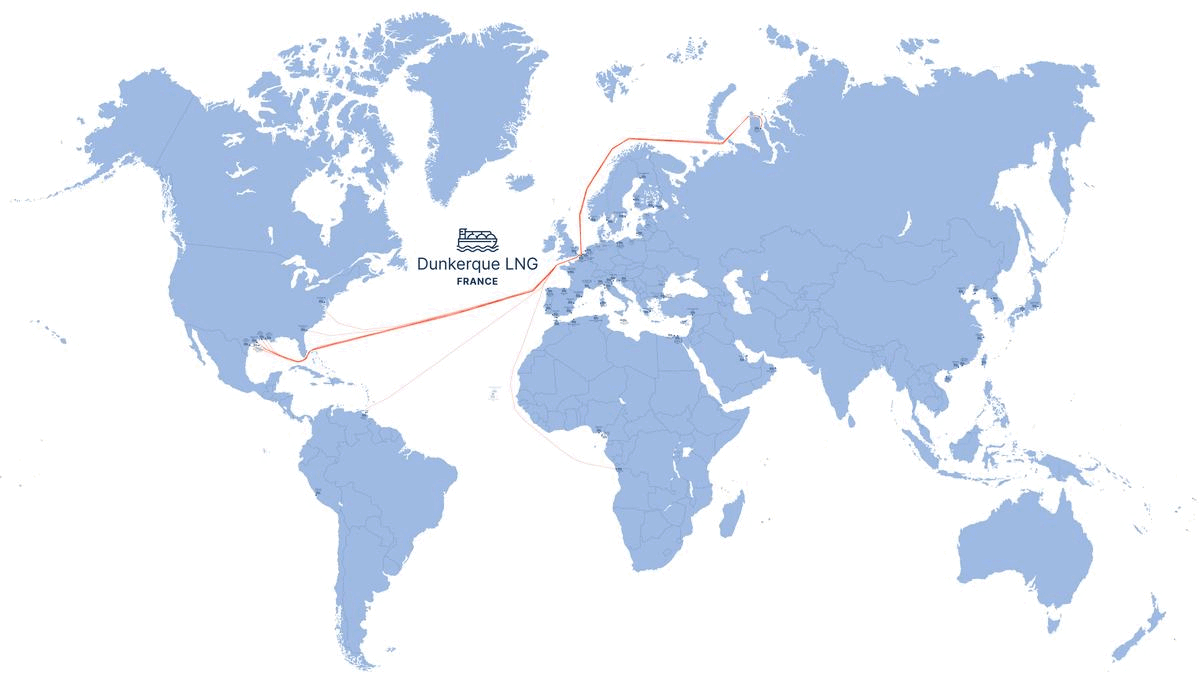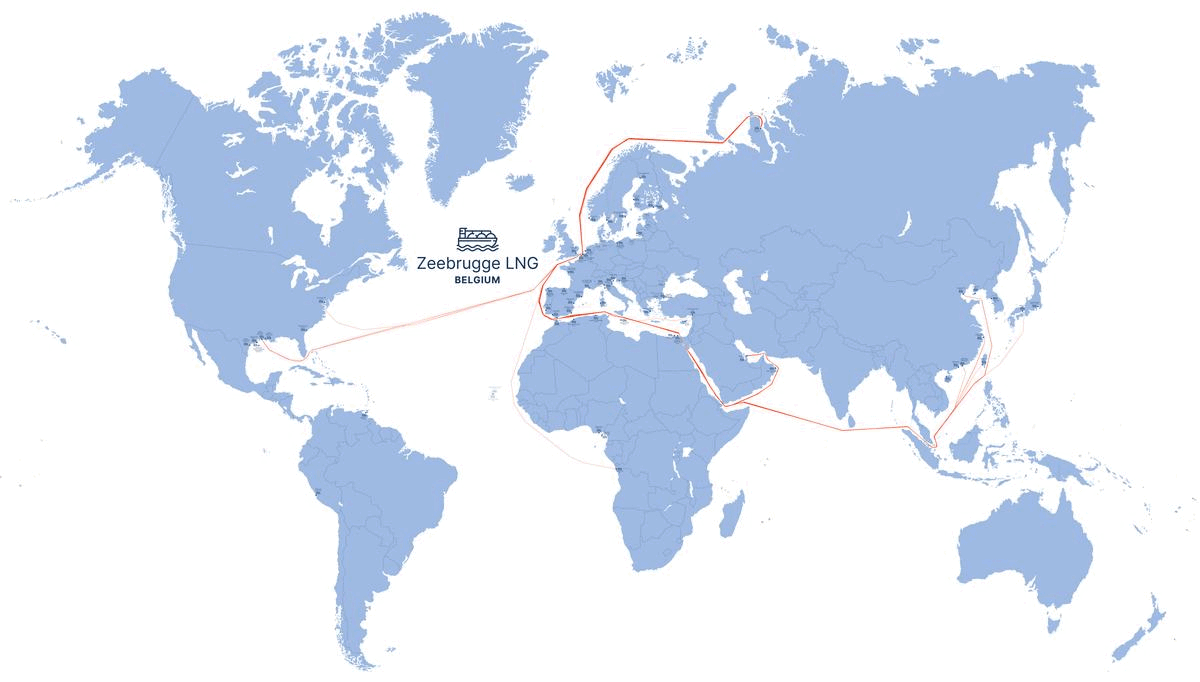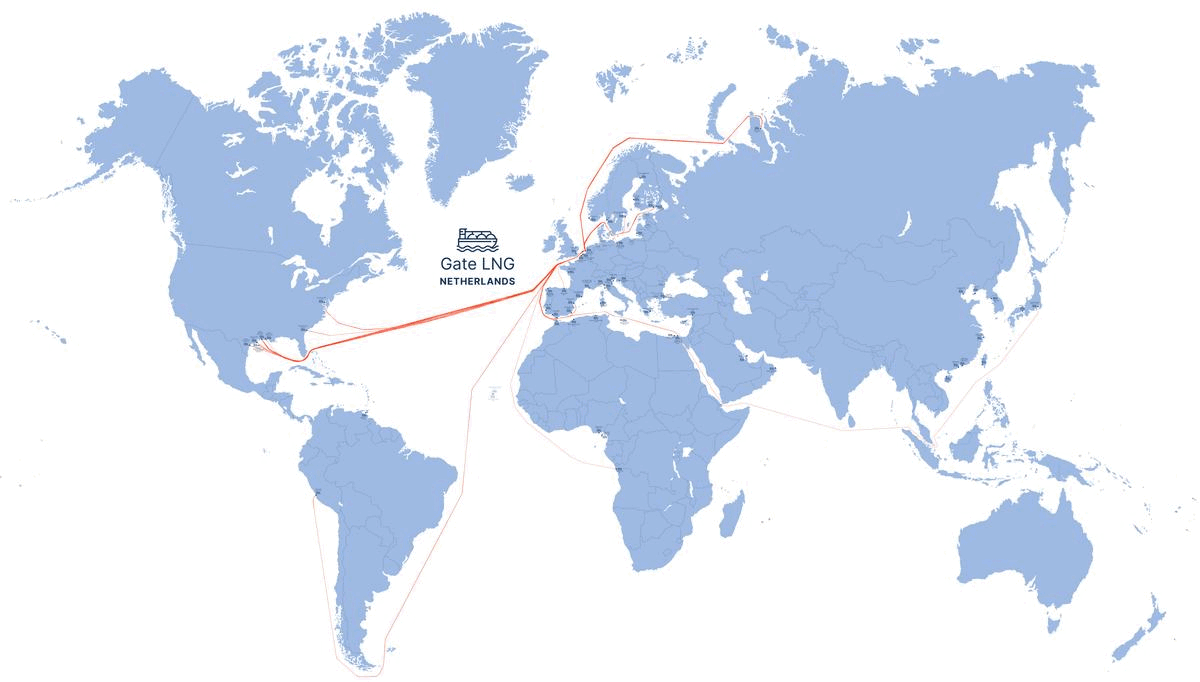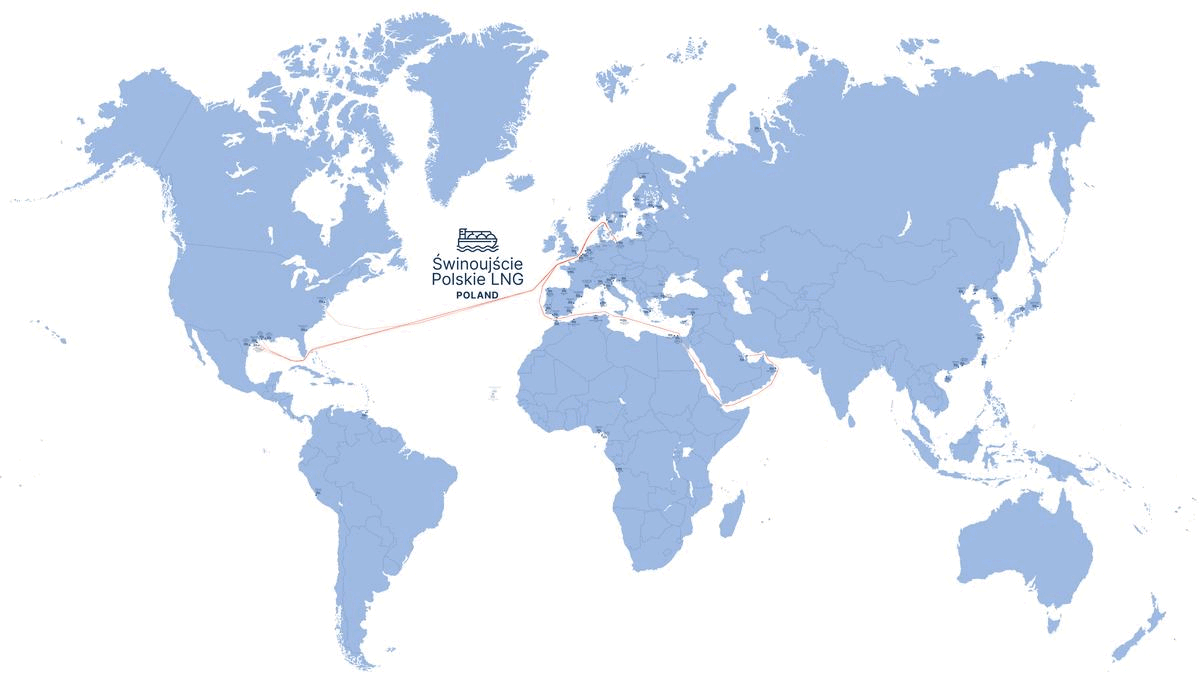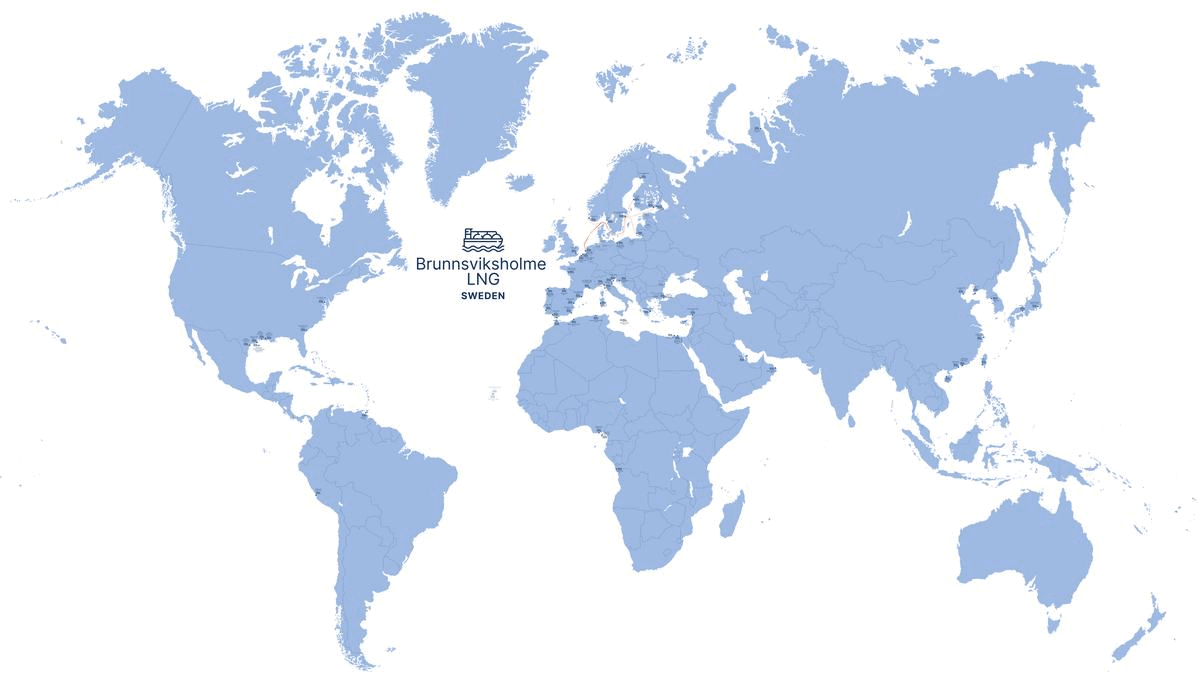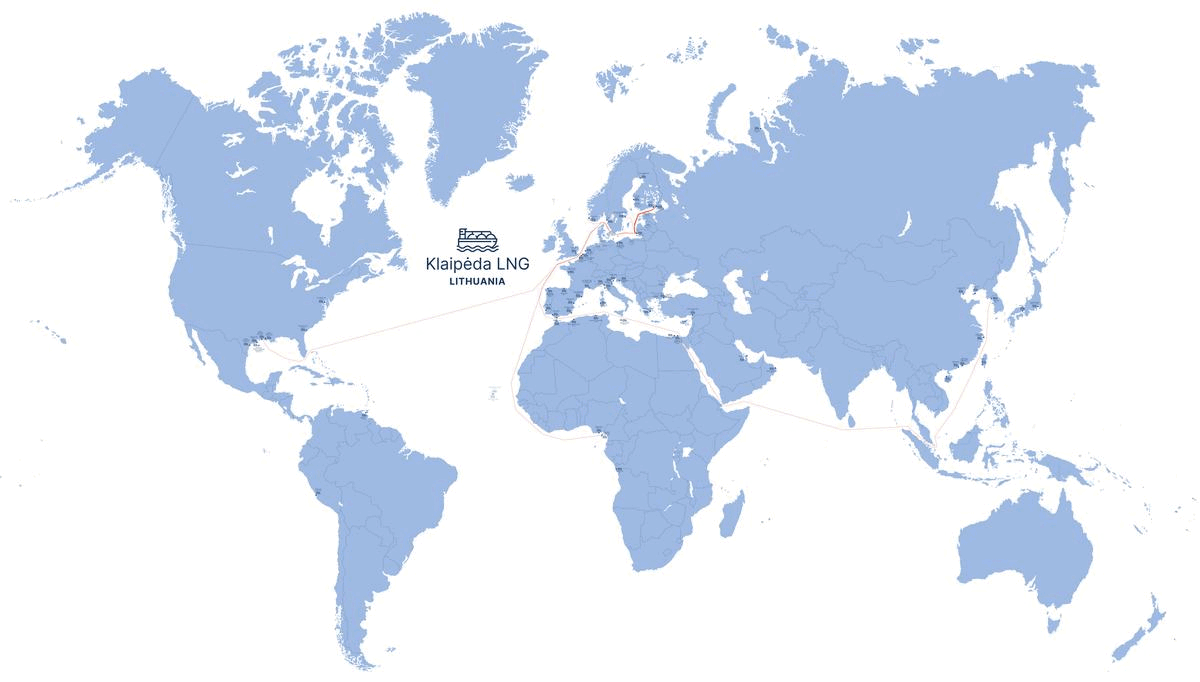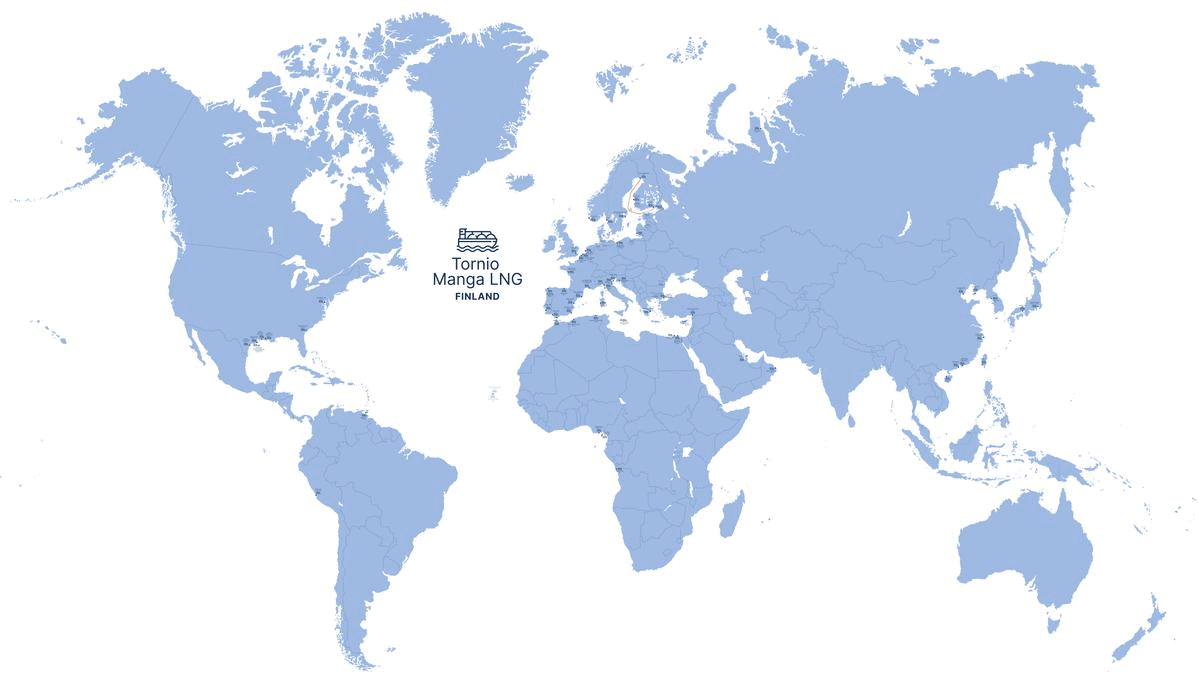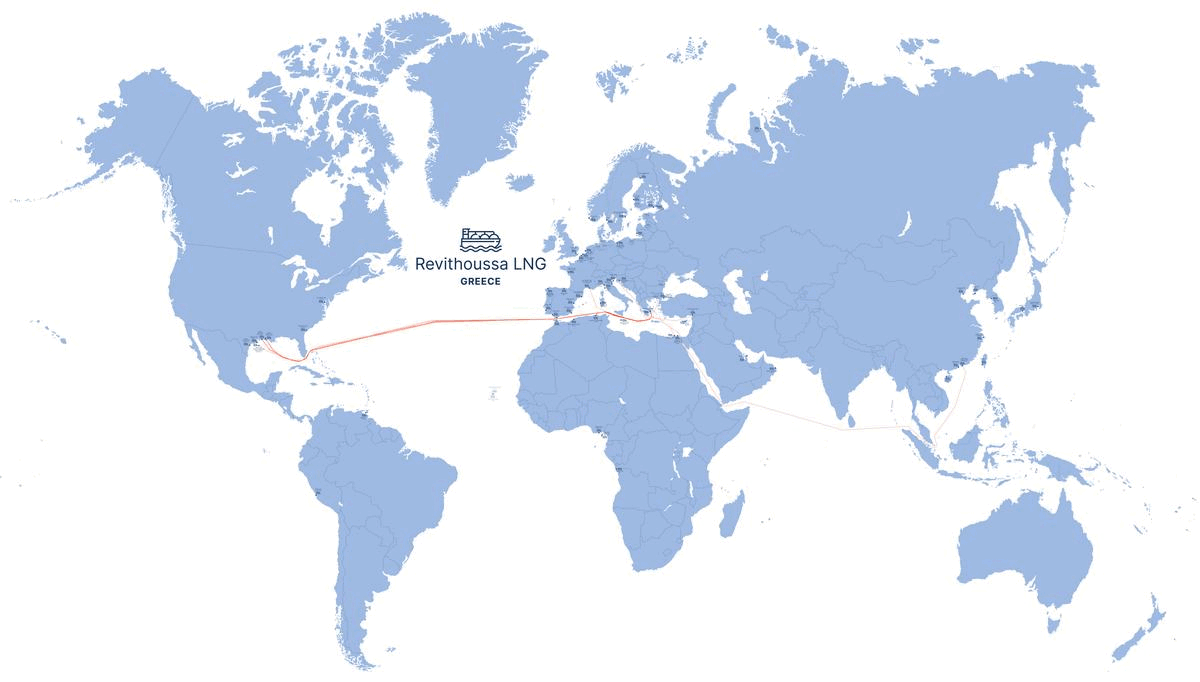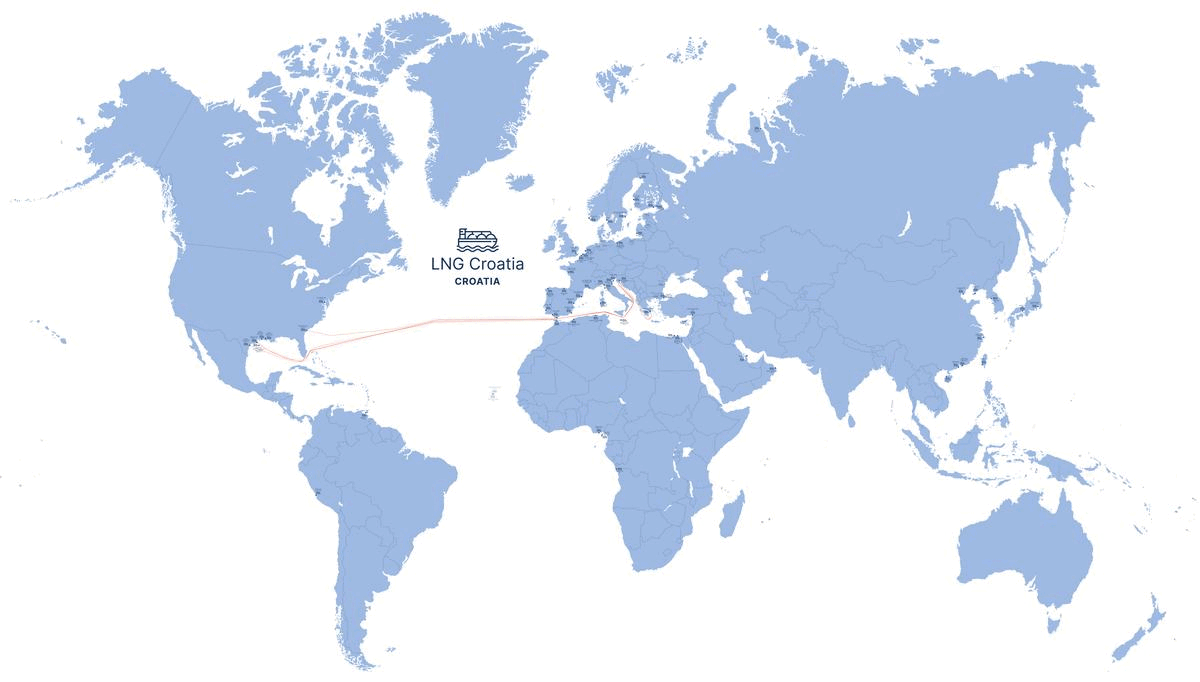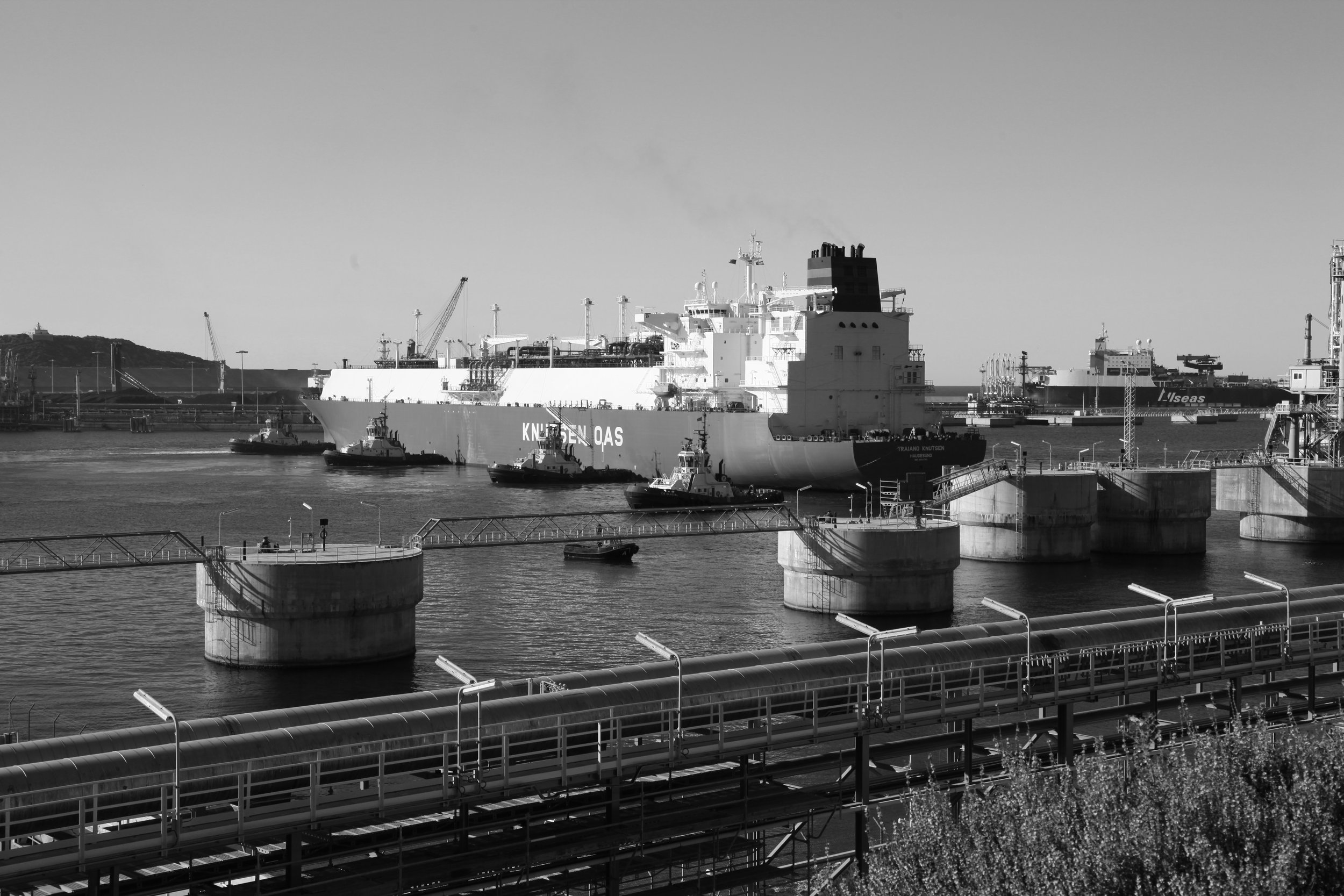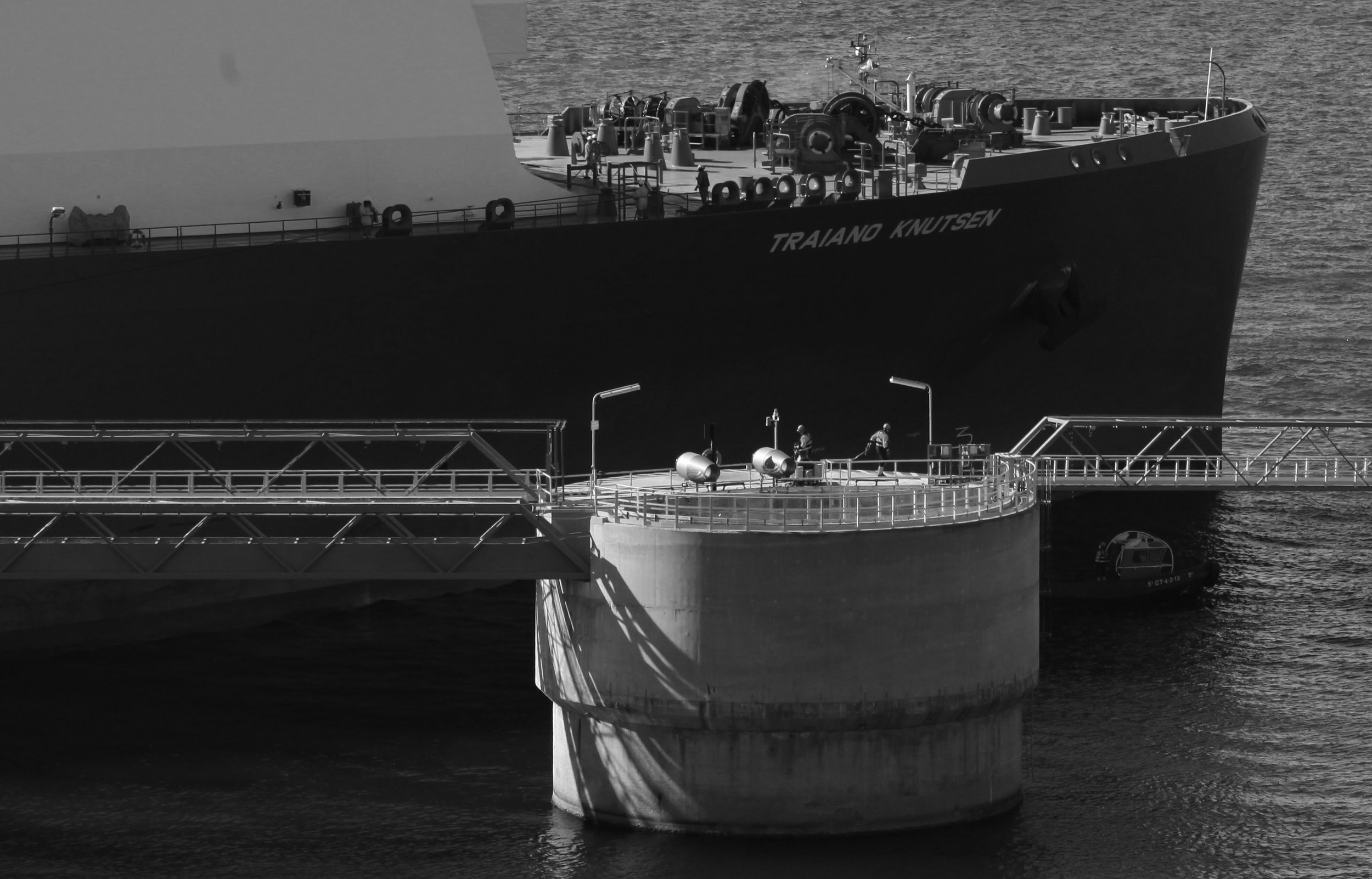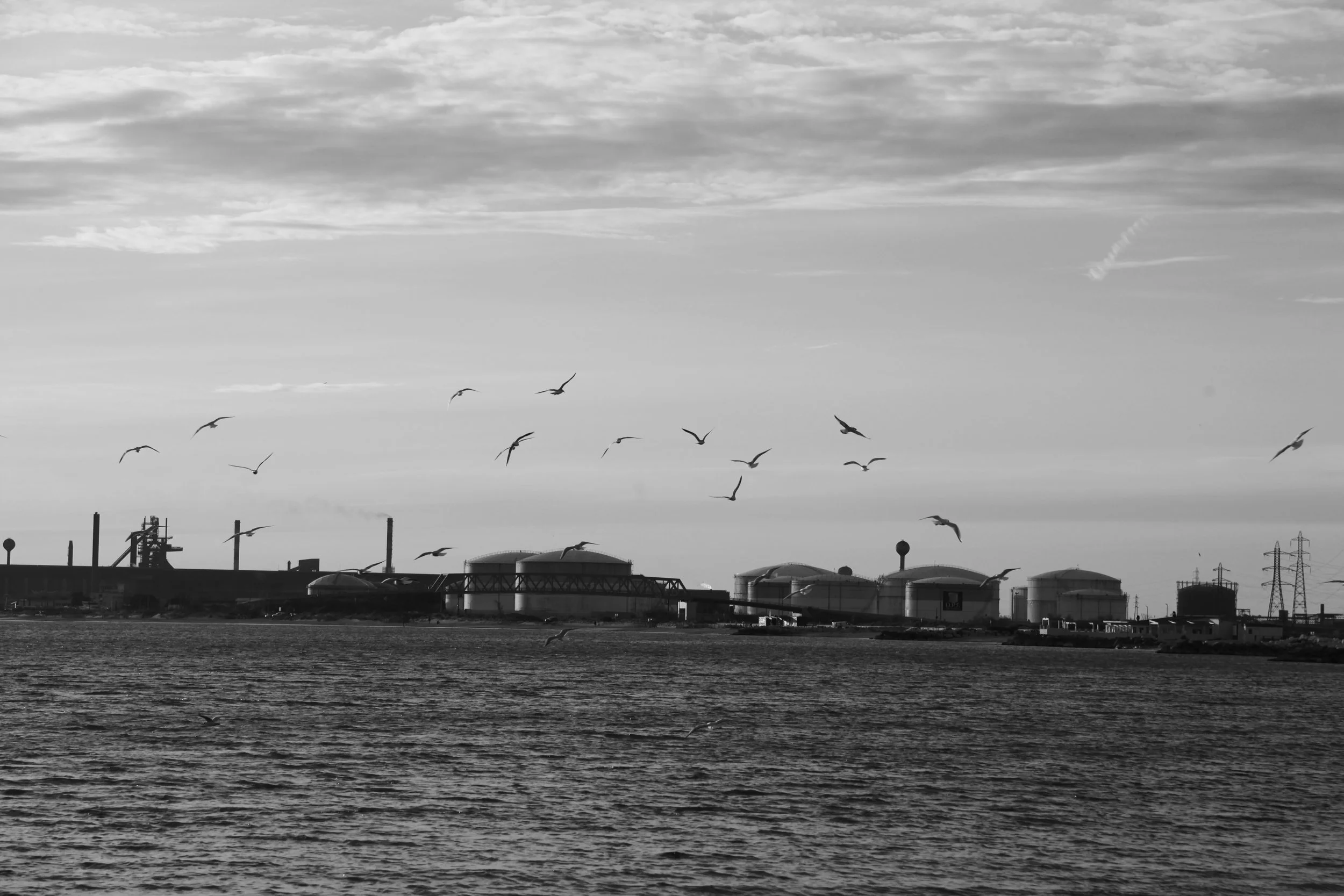I. Gas Havens
Under sunny skies and with the assistance of five tugboats, the 299m long Traiano Knutsen pulled into the port of Cartagena, Spain on the morning of Tuesday, February 15, 2022.
It was completing a journey of 5,111 nautical miles from Corpus Christi, Texas, where it had loaded its tanks with liquified natural gas (LNG) over two weeks prior. Natural gas (mostly methane) had been extracted and cooled to a temperature of -162°C (260°F) required to liquify and ship it. In the Spanish terminal, it would be “regasified” to be distributed for uses such as electrical production, industrial power generation and heating.
As winter began, European natural gas prices skyrocketed to unprecedented levels, closing at a maximum €180.27 per megawatt hour in the Dutch TTF Futures Trading Hub on December 21, 2021, an over 11 times increase over the previous year. ln fact, natural gas prices on the Dutch market had already been steadily climbing for most of the year, consistently hitting new records between March 3 and October 5 (€15.52 to €116.02 per megawatt hour, already an increase of over 700%) before dropping and rebounding to new heights in December.
As the European price abnormally outpaced the Asian natural gas rate, tankers from the United States bypassed Asian destination terminals and continued through the Suez Canal to deliver supplies to Europe, responding to the higher price signal. The European Union, which imports over half of its energy from outside its borders including about 90% of its natural gas, faced the winter with low supplies and demand steeply rose.
Cartagena, February 13, 2022 (top and middle) and February 14, 2022 (bottom)
Several factors contributed to the rise in natural gas demand including a shortage of stored gas in European tanks, the closing of the Maghreb-Europe Gas Pipeline from Algeria to Spain on November 1 due to geopolitical tensions between Algeria and transit-country Morocco, lower-than-expected electricity generation from wind power and French nuclear reactors, and extremely low refill rates from Russian state-controlled Gazprom along two major pipeline export routes through Ukraine and Poland. LNG, of which Spain is Europe’s largest importer, was being used to increasingly fill the void. By January 2022, EU LNG import terminals were being used at record levels, reaching over 70% of their operational capacity.
The shortage affected all areas of the European energy economy. As 2022 began, coal miners in Katowice, Poland, protested their working conditions by blockading trains supplying power plants during a two day action between January 4-5, 2022. The miners had been working weekends and overtime for several months without adequate compensation due to the energy crisis, according to the magazine Tygodnik Solidarność. That same week a sudden citizen uprising in the Central Asian country of Kazakhstan spread to the capital of Almaty as fuel prices rose. Kazakh government buildings were destroyed before the protests were violently suppressed by security forces and international reinforcements including Russian military paratroopers who arrived on January 6, 2022.
“If we aren’t able to pay the lights, we’ll light up with barricades” reads a message in El Masnou, Catalunya, February 2, 2022
The Nigerian LNG tanker Abalamabie in Barcelona, February 12, 2022
The Besòs V Power Station generates electricity by burning natural gas, Barcelona, February 18, 2022
By the end of December 2021, inflation in Spain had increased by 6.6% over the previous year, driven significantly by rising energy prices. According to data published in El País from the INE (National Institute of Statistics), the price of electricity had risen in Spain by 74% in 2021, while liquid fuel sources also rose dramatically (gasoline increased by 23%). This was appreciably higher than the annual inflation rate which peaked at 5.3% in the summer of 2008, recorded at the onset of the Spanish economic crisis of 2008-2014.
Rising energy prices were a major driver of remarkable inflation across the European Union during 2021. Eurostat, the European Union’s statistical service, estimated a 5.3% inflation rate across the EU in 2021, with a 26% increase in energy prices, the largest increase in any major economic sector by far. The average wholesale electricity price (the trading price of electricity before it is sent to the consumer), rose by over 500% between December 2020 and December 2021 in France, Italy and Germany according to Statista. This trend would slightly fall in January 2022, but overall energy inflation rates would only worsen as 2022 began.
Cartagena, February 13, 2022
Russia is the European Union’s largest supplier of natural gas and provides approximately 45% of EU imports (40% of total consumption), followed by Norway at about 20% of EU imports. The Netherlands, which was once a major natural gas producer, is set to close its largest gas field in the province of Groningen by mid-2022, while the United Kingdom’s domestic production is no longer included since Brexit. Besides the over half of natural gas imports supplied to the EU by Russia and Norway combined, other pipeline routes (mostly from Algeria) and LNG from a group of countries fill the gap. LNG constituted approximately 25% of European natural gas imports in 2020 and this percentage is rising, with the notable arrival of American tankers in 2016 and Russian tankers in 2017. The United States and Russia are the world’s first and second largest natural gas producers worldwide.
The rise of natural gas exports from the United States to the European Union has been especially significant since the first shipments in 2016. By 2021, 28% of EU LNG imports came from the U.S. The month of January 2022 saw an even steeper rise in American LNG deliveries. A record total of 44% of all LNG cargoes entering EU ports came from the United States, as the country became the clear leading LNG exporter to the EU and a growing alternative to pipeline gas.
See the European Union’s LNG import routes from December 2021-February 2022 below.
An interactive map can be found here.
The European Commission has heralded its LNG partnership with the United States since the Obama administration authorised American natural gas exports in 2016. This quickly accelerated under the Trump administration as developing LNG export terminals came into service and the United States aggressively pursued a policy to establish itself as the world’s largest oil and natural gas exporter following the shale gas (fracking) boom. In the publicly available document EU-U.S. LNG Trade (February 2022 version), the Commission writes, “Since the meeting of U.S. and EU Commission Presidents in 2018, US LNG exports in Europe increased by 2418%” citing data received until February 2, 2022. Former U.S. Secretary of Energy Rick Perry gave a resounding advertisement in a joint television interview with then-Secretary of State Mike Pompeo broadcasted by CNBC Business on March 12, 2019:
“The American energy doesn’t have strings attached as I said. It’s clear that Russian gas has strings attached. We think it’s important for our friends in Europe, whether it’s the Central Europeans or whether it’s the Western Europeans to know that they can get that LNG laid in there from the United States, from Qatar, from Australia, wherever it may be. Having diversity of fuel, diversity of supply, diversity of roots. That’s the real key here. The American LNG has the ability to truly make Europe free from that Russian intervention… America can deliver the energy needs of a lot of our allies.”
The EU-U.S. natural gas partnership did not diminish with the defeat of Donald Trump in the November 2020 American presidential election. Natural gas exports from the United States to the European Union reached historic levels in 2021 under the Biden administration and Democratic Party control of Congress. Export capacity from its eight commercially operating LNG terminals is set to greatly increase with an additional terminal under construction, three existing terminals expanding and ten more developing terminals having received federal approval.
The European Commission states in EU-U.S. LNG Trade:
“Further transatlantic cooperation will include actions aimed at: removing unnecessary US LNG licensing barriers to accelerate US exports… developing joint efforts to complete key missing infrastructures and investments in Europe to improve access to LNG, establish regular consultations and promotion activities with market operators to make US the major gas supplier to Europe.”
Cartagena, February 15, 2022
The implementation of a unified natural gas import strategy (including helping the United States become “the major gas supplier to Europe” according to the referenced document) has been the source of major tensions in Brussels, across the EU and beyond. In 2014, the Commission adopted the European Energy Security Strategy to reduce dependence on Russian natural gas following Russia’s annexation of Crimea and military intervention in the Donbas region of eastern Ukraine, with renewed fears of Russian supply disruptions to Eastern Europe similar to those which occurred in 2006 and 2009. To increase the capacity to import natural gas by sea, the European Commission recently co-financed LNG import terminals in Świnoujście, Poland for €332 million and in Omišalj (Krk), Croatia with €124 million. Other notable investments have been made for the Vassiliko, Cyprus LNG Terminal (€116 million), the Revithoussa LNG Terminal in Greece (€50.8 million) and pipeline connections for LNG imports in Lithuania (€27.4 million).
While countries including Poland, and leaders such as former-president of the European Council Donald Tusk firmly advocated for the reduction of natural gas imports from Russia, the percentage of Russian natural gas imports to the EU actually continued to rise during the decade 2010-2020. Germany especially championed a course of increasing ties with Russia through the continued development of the Nord Stream 2 pipeline, linking Russian gas fields directly with Germany through the Baltic Sea.
Natural gas has been a hallmark of modernizing European economies for over half a century as a cleaner burning and versatile alternative for coal, as well as replacing former sources of gas produced as a byproduct of coal combustion and steelmaking processes. As domestic production of natural gas in the EU continues to decline, many European policymakers are banking on continued natural gas imports to meet demand and achieve the ambitious decarbonization goals of the European Green Deal (55% reduction in CO₂ emissions by 2030 in comparison to 1990 levels, an approximate 30% reduction for the decade 2020-2030 alone). At the 9th EU-U.S. Energy Council on February 7, 2022, Josep Borrell, Vice President of the European Commission, stated:
“Our joint work is needed to accelerate a green energy transition to become neutral from the point of view of our climate in the future. In the medium term, there is the climate neutrality. In the short term, it’s security of supplies of gas. Both things go together. We need to face the current situation in the eastern border keeping in mind the purpose of decarbonizing our energy mix, because the only lasting solution to energy resilience, security, is going from fossil fuels to renewables. It is the best way of facing the challenge of climate change.”
The wisdom of relying on imported natural gas as a major transitional component of an economic decarbonization strategy is strongly questioned by environmental activists on both sides of the Atlantic. While natural gas offers a clearly cleaner source of energy at the combustion end in terms of both CO₂ emissions and dangerous pollutants, the impacts from extraction and transportation are hotly debated. Indeed, hydraulic fracturing (fracking), the most common practice of gas extraction in the United States is banned or under moratorium in many European countries. Methane leakage in the natural gas supply chain can vary greatly depending on source country and local industry standards, increasing atmospheric concentrations of the second most impactful greenhouse gas driving accelerated climate change overall. According to the International Energy Association, “while methane tends to receive less attention than CO₂, reducing energy-sector methane emissions will be critical for avoiding the worst effects of climate change.”
Cartagena, February 15, 2022
